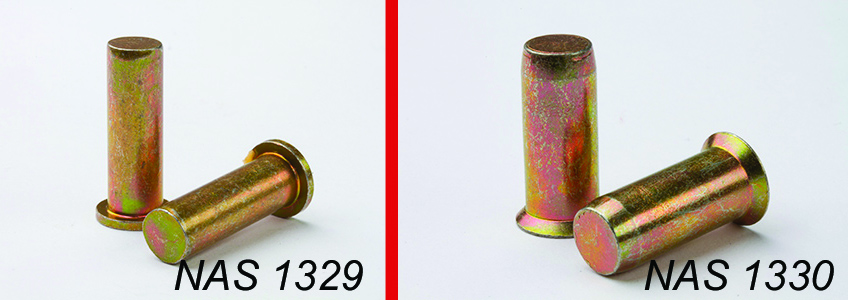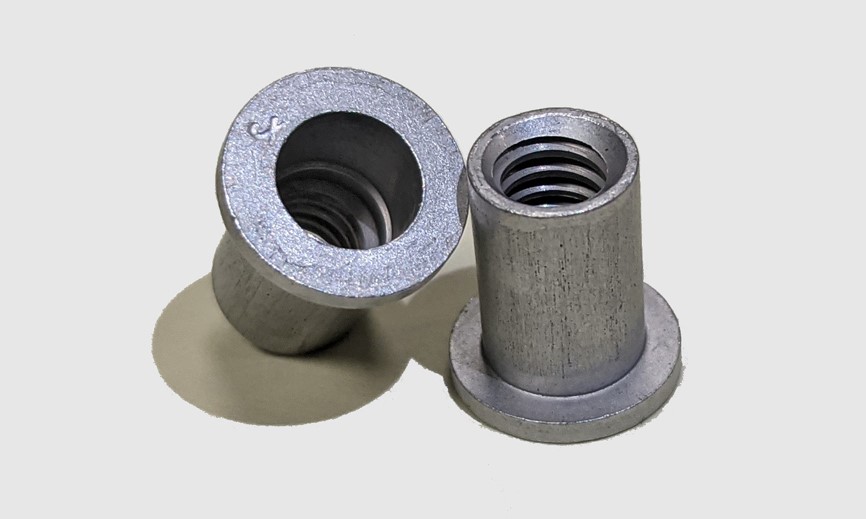Rivet Nuts vs. Weld Nuts: An Obvious Choice
Leave a CommentTwo commonly used fasteners in metal fabrication are rivet nuts and weld nuts. While they might seem similar in function by creating a strong joint, each offers distinct advantages and disadvantages depending on the application. But as you continue to read on, the advantages rivet nuts have over weld nuts are quite substantial in terms of time, waste, and cost effectiveness.
Here are some detailed comparisons to help decide which fastener is best for your application.
What Are Rivet Nuts?
Rivet nuts, or threaded inserts, are tubular fasteners that can be installed into pre-drilled holes in a variety of materials, including thin metals and plastics. They are secured by deforming the body of the nut to collapse and attach to the base material using specialized tools.

Uninstalled and installed rivet nuts
Advantages:
- No Welding Required: Perfect for projects without access to welding equipment.
- Ease of Installation: Can be installed quickly using hand tools or power tools.
- Versatile Applications: Useful in thin or soft materials where traditional threading isn’t feasible.
- Installed Blind: Only need one side of the workpiece to install a rivet nut.
- Removable: Though not ideal, rivet nuts can allow for disassembly and reassembly without damaging the surrounding material. If there is an issue, the entire workpiece isn’t lost and rework can occur.
- Small Footprint: Rivet nuts installation, even in high volume, only need a small handheld tool and air hose hookup. Some tooling even belong on assembly lines. Welding cells take up much more space and are messier, and smellier.
- Can be Installed Post Paint: There is no worries about paint being chipped or discolored after installation. This makes for an easier process instead of painting after installation.
Disadvantages:
- Lower Load Capacity than Weld Nuts: Rivet nuts may not provide the same load-bearing strength as weld nuts, but often times don’t need to.
- Risk of Spinning: If improperly installed, the nut can spin in place, making it difficult to secure fasteners. But with today’s process monitoring tolling, automation, and even calibration units, there are control measures that help deter this and make sure rivet nuts are properly installed so they perform.
When to Choose Rivet Nuts
Rivet nuts are better suited for:
- Thin materials or situations where creating a thread isn’t possible in the base material.
- Applications that are only able to be installed on one side of the work piece.
- Quick installations in lightweight or portable projects.
- Easy to install: operators with limited assembly experience can quickly learn how to install rivet nuts with proper tooling.
What Are Weld Nuts?
Weld nuts are specialized nuts designed to be permanently affixed to a metal surface using a welding process. They come in various shapes, such as hexagonal, round, or square, and often include flanges or projections to ensure a secure weld.

Weld nuts with a weld splatter on the threads of the installation
Advantages:
- High Strength: Weld nuts are ideal for applications requiring high strength and load-bearing capacity. In some cases they are stronger than rivet nuts, but oftentimes the strength they have isn’t completely necessary to the application.
- Permanent Joint: Once welded, the nut becomes an integral part of the assembly, reducing the risk of loosening over time.
- Vibration Resistance: Excellent for environments where vibration is a concern, as the welded connection resists movement.
Disadvantages:
- Requires Welding Equipment: Welding tools and employees who know how to weld are necessary.
- Non-Removable: Weld nuts are permanent, so disassembly will likely damage the workpiece.
- Heat-Affected Zone: Welding can weaken the surrounding material if not done properly.
- Total cost of installation is more: While the price per fastener might be less expensive in some cases, the time it takes to weld, the cost of welding itself (electricity, plus welder wages), the real cost is more expensive than rivet nuts installation.
- Bigger Floor Footprint: Manufacturing and assembly is about maximizing space so more products can be produced or assembled. Welding takes up considerable more footprint on the floor than what’s needed to install rivet nuts, and ultimately less efficient to the total operation.
- New Spot Welder or Resistance Welder Extremely Expensive: New automated welding equipment are well over $100,000 these days, much more expensive than rivet nut installation systems, including rivet nut automation.
- Need to be Installed Pre-Paint: Because of splatter and discoloration of the welding installation.
When to Choose Weld Nuts
Weld nuts are ideal for:
- Heavy-duty applications, such as automotive chassis.
- Environments where vibration and torque are significant factors.
- Projects where permanent fastening is preferred.
Conclusion
The choice between weld nuts and rivet nuts depends on the specific demands of your project. If you need a permanent, high-strength solution and have welding capabilities, weld nuts are the way to go. However, if you’re working with lightweight materials, need a removable fastener, or lack welding tools, rivet nuts are a versatile and user-friendly alternative.
By understanding the strengths and limitations of each fastener, you can ensure a secure and efficient assembly, no matter the task at hand.
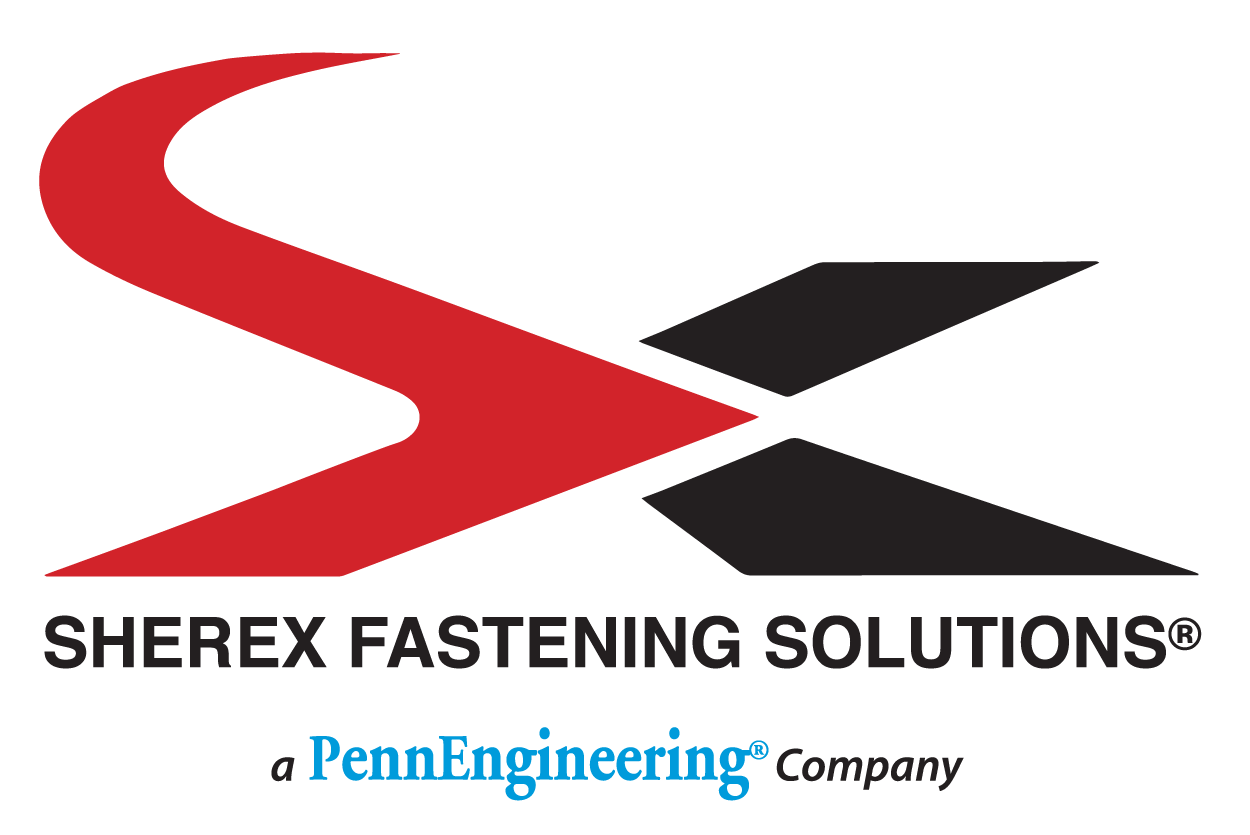






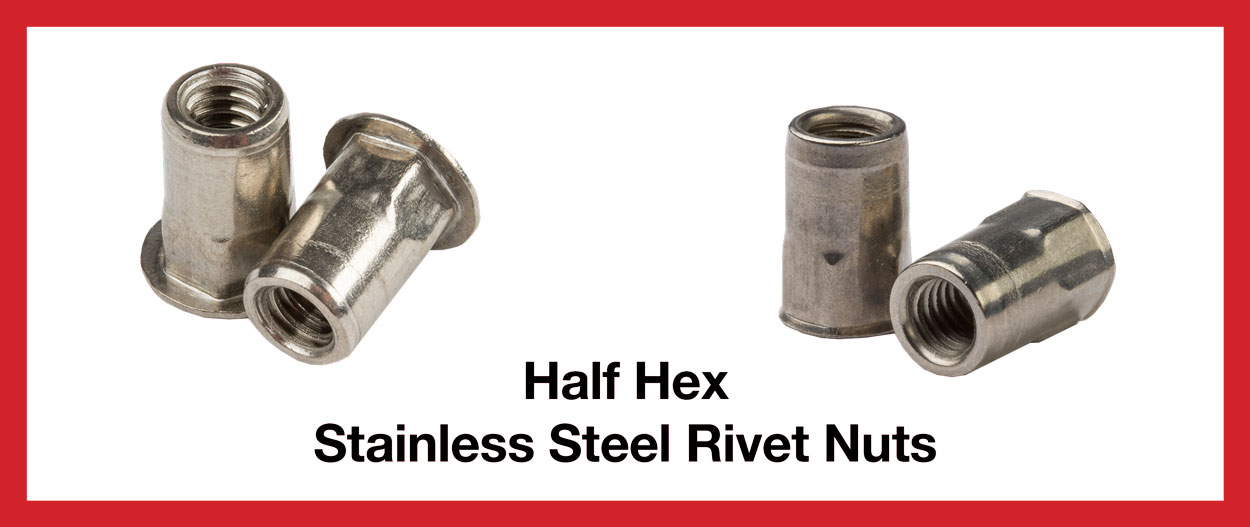
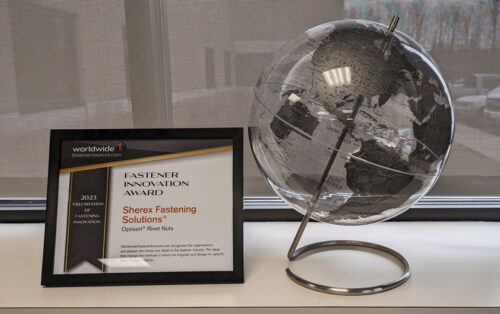
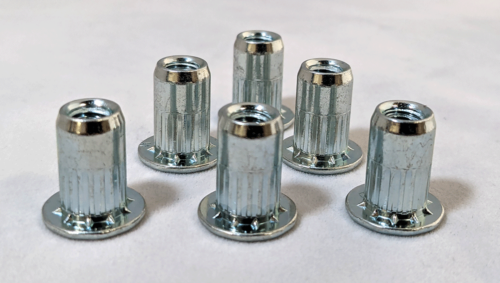
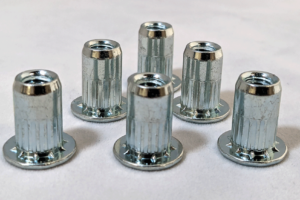
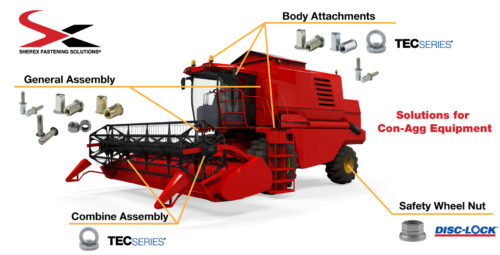 We’ve added two new industry pages and a solutions for composite page that highlight some of the most popular and best practice fasteners for the application.
We’ve added two new industry pages and a solutions for composite page that highlight some of the most popular and best practice fasteners for the application.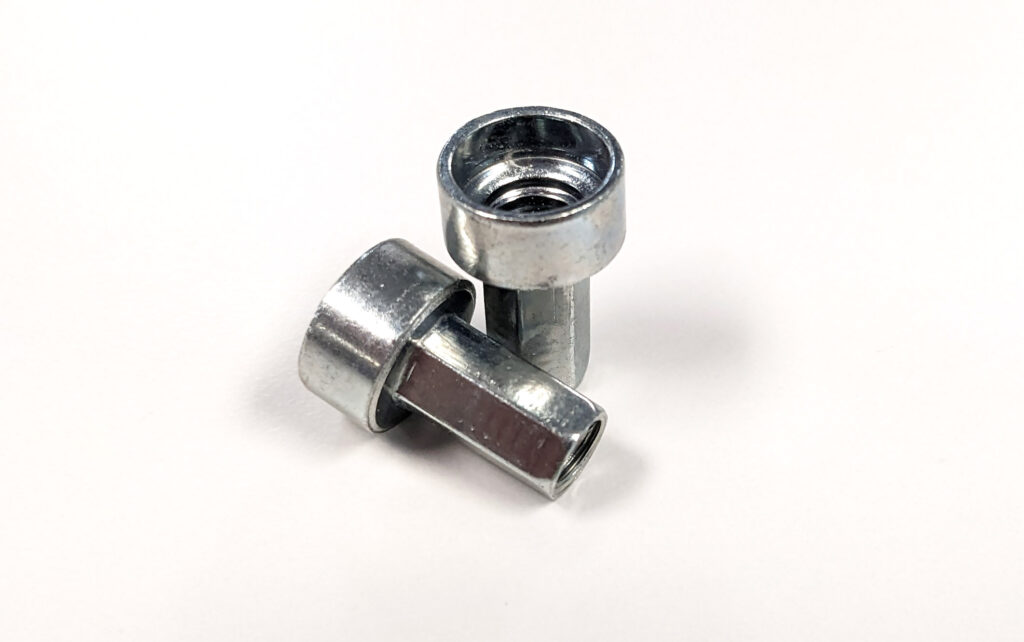
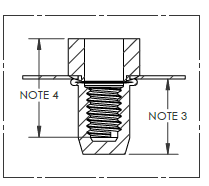
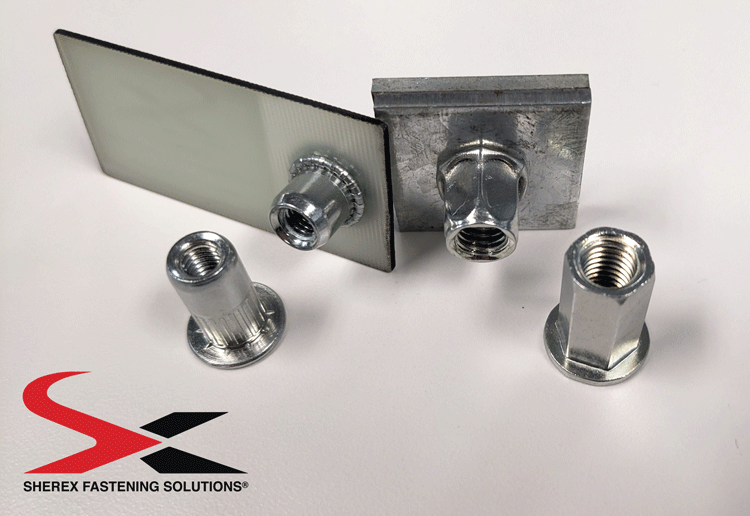
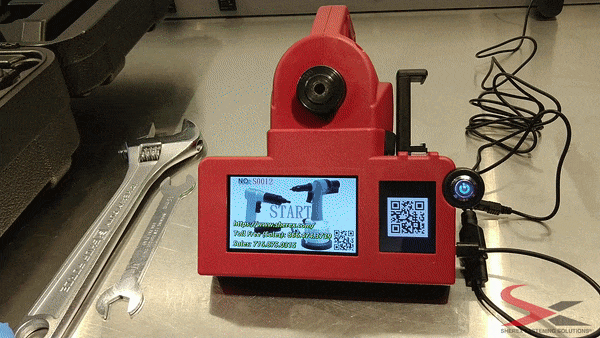
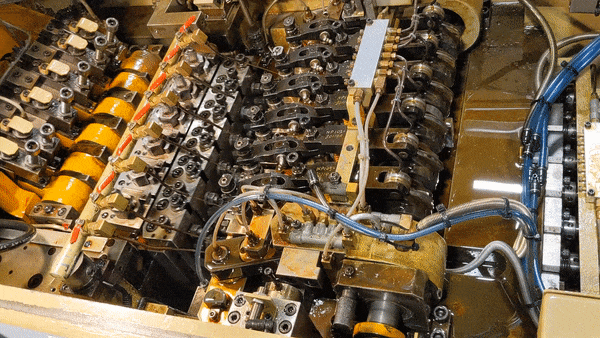
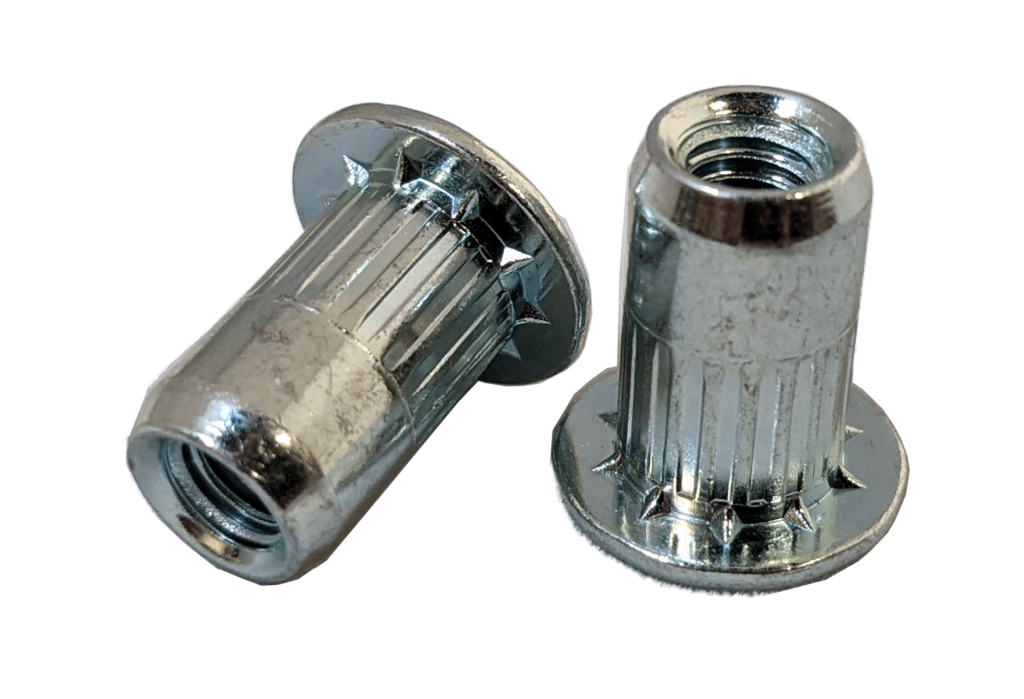
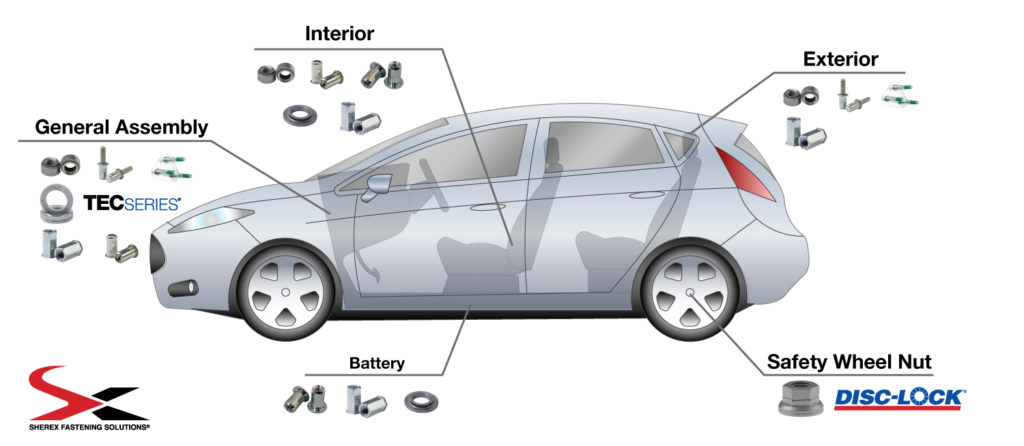
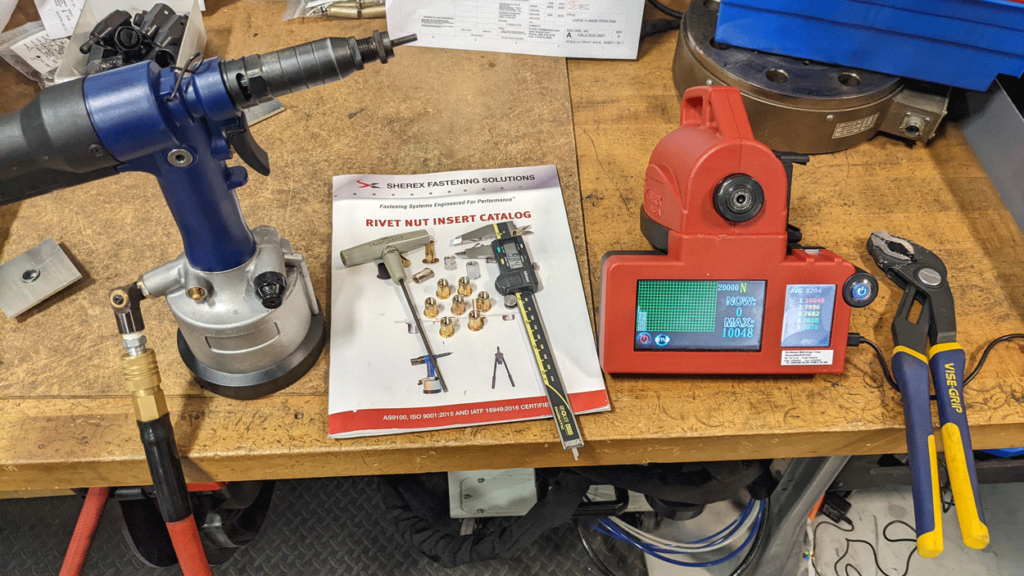
 Sherex makes a variety of
Sherex makes a variety of 